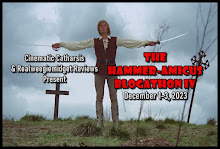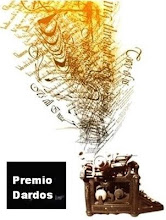Part of The Hammer-Amicus Blogathon
The charm about this movie is that all the supporting stars play even their most ridiculous lines with deadly earnest, thereby giving an enjoyable gravitas to a slice of cinematic hokum.
You can listen to it from around the 55 minute mark.
I swear, sometimes I feel this blog is like my own private Fantastic Four, i.e. an IP that once a year I need to keep updated so as to be able to hold on to it.
Truth be told whatever little writing time I have I now mainly invest in my Krimi blog where I feel I have more to contribute as Hammer is a subject that already has so many good and incredibly well informed writers.
Still, Hammer is one of my first loves so every once in a blue moon I may put virtual pen to virtual paper and write a few lines.
The occasion this time was my discovery of Audible's The Unquenchable Thirst of Dracula. I had heard of this courtesy of the Facebook's Hammer Lovers Group.
Directed by Mark Gatiss, this BBC production was originally transmitted around Halloween, on October 28 , 2017 at 2.30pm on BBC Radio 4 and is part of a series of radio adaptations of film scripts that never passed the pre-production stage.
The radio play is based on a 1974 script, The Insatiable Thirst of Dracula, by John Elder (=Anthony Hinds) and would have been following up from The Satanic Rites of Dracula. At the time Hammer had planned a national talent search to replace Christopher Lee in the role. (This is according to Last Bus to Bray, Vol. 1. The Amazon sales blurb mentions that this would have followed Scars of Dracula and was replaced in favour of Dracula AD 1972 so what do I know?)
Similar to The Legend of the 7 Golden Vampires (1974) where Lee had been replaced by John Forbes-Robertson, this production would also have been set in the early part of the 20th Century in Asia but this time it saw the Count having escaped from England to India.
Another more famous unfilmed Hammer production, Kali - Devil Bride of Dracula, had a similar premise and was written by Christopher Wicking.
According to Mark Gatiss Kali was indeed a later version of Hinds’ script.
When The Insatiable Thirst of Dracula failed to make it into production as a feature film, there were discussions about turning it into an episode of the planned The Hammer House of Horror TV series that was to focus on feature length TV films per episode.
Alas, this idea also was scrapped.
The Unquenchable Thirst of Dracula follows young Englishwoman Penny seemingly on a spontaneous trip through 1930s India after being left a bit of an inheritance. On the train she meets two musicians, a brother and a sister, as well as another Indian who hosts her when she can’t find a hotel on short notice.
The two musicians are hired by the Maharajah and his wife to perform for them, not knowing that all this is on command of Count Dracula who has found shelter there and has the local court under his command.
And what about Penny? Did she really just go there on a whim?
Hearing this dramatisation is actually an absolutely amazing way to imagine what this film may have been like. It’s very well acted with excellent and moody sound effects and the fact that this sticks closely to the original script ensures that its running time of 86 minutes is also very much in line with that of a typical Hammer production so it definitely has that classic Hammer feeling… which may indeed be one of the reasons why it never saw production as it is something that ultimately would have come a bit too late in a period where even Hammer themselves had started approaching more contemporary approaches to their films (e.g. To The Devil A Daughter) and The Exorcist had redefined the way genre films were approached.
Still, I loved it and am planning to at least also listen to a similar adaptation of Alfred Hitchcock’s unfilmed The Blind Man.


